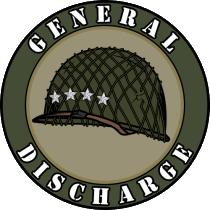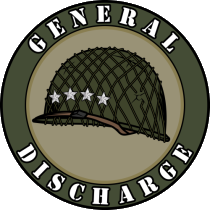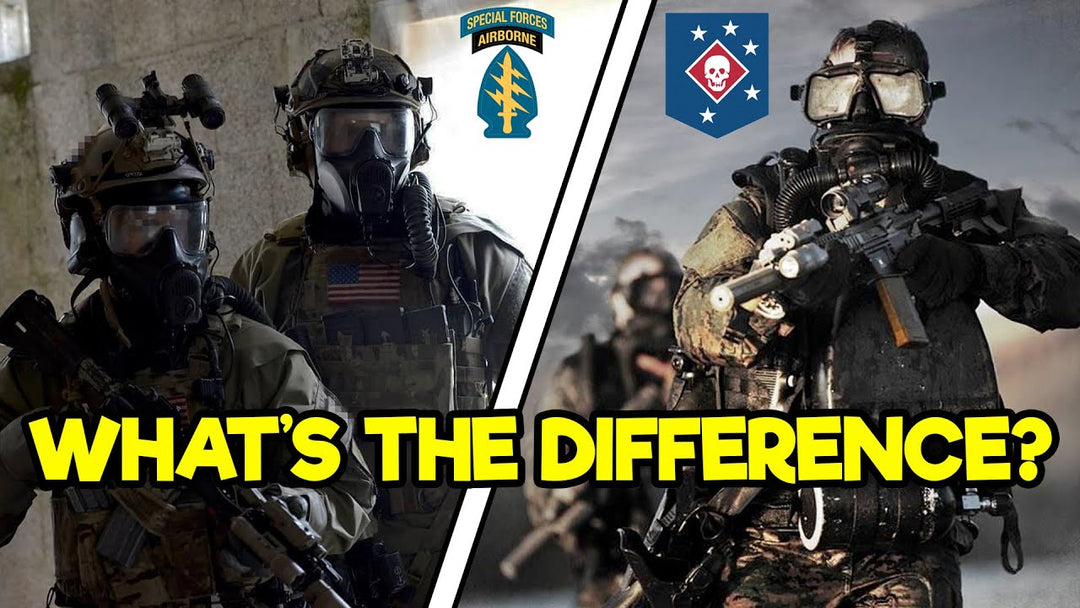U.S Army vs. U.S. Navy: All You Need to Know

United States Army and United States Navy.
Two branches of the United States military.
What sets them apart? What do they have in common? What can they do? Keep reading, and we are going to answer all these questions and many more about the U.S. Army and the U.S. Navy.
TABLE OF CONTENTS
U.S ARMY VS. U.S. NAVY: OVERVIEW
U.S ARMY VS. U.S. NAVY: CAPABILITIES, MISSIONS, OPPORTUNITIES
U.S ARMY VS. U.S. NAVY: SPECIAL OPERATIONS
U.S ARMY VS. U.S. NAVY: JOBS & RANKS
U.S ARMY VS. U.S. NAVY: LOCATIONS
U.S ARMY VS. U.S. NAVY: TRAINING
U.S ARMY VS. U.S. NAVY: REQUIREMENTS
U.S ARMY VS. U.S. NAVY: CONCLUSION
U.S ARMY VS. U.S. NAVY: OVERVIEW

Founded on June 14th, 1775, the U.S. Army is the biggest military branch of the United States. As the land-based branch of the armed forces, its five core competencies are prompt and sustained land combat, combined arms operations, special operations, setting and sustaining the theater for the joint force, and integrating national, multinational, and joint power on land. It preserves peace, security, and provides defense for the United States.
Founded on October 13th, 1775, the U.S. Navy is the third largest branch of the United States, behind the Army and the Air Force. It is the largest and most powerful navy in the entire world, possesses the world’s largest aircraft carrier fleet, and has over 290 deployable combat vessels. It serves as the maritime-based branch of the armed forces, with its five enduring functions being sea control, power projection, deterrence, maritime security, and sealift.
U.S ARMY VS. U.S. NAVY: CAPABILITIES, MISSIONS, OPPORTUNITIES

In the Army, you’re called a soldier, and in the Navy, you’re called a sailor. These two branches have had a friendly rivalry going on for years. You see it with the Army Navy football game every year, how they refer to each other, and a bunch of other little jabs they take at each other on the regular. But through all of that, these two branches are both something to be proud of serving in.
Let’s go over their official missions. For the Army’s, it is "to fight and win our nation's wars, by providing prompt, sustained land dominance, across the full range of military operations and the spectrum of conflict, in support of combatant commanders.". The Navy’s mission is: to recruit, train, equip, and organize to deliver combat ready naval forces to win conflicts and wars while maintaining security and deterrence through sustained forward presence.
To put it simply, they win wars and maintain defense by means of land, sea, and air, with the Army having more of a land-based focus, and the Navy, a maritime one.
After reading this bit you’re probably thinking, So what? I know the Army deals with a lot of land, and the Navy deals with the water. Tell me something I don’t know, General Discharge!
Well, here we go, then. Did you know the Army has ships and boats? Yes, even in the Army, you can find yourself around more watercraft than some sailors do. You can even be a diver in the Army! The Army has logistics support vessels, landing crafts, and tugboats. Army watercraft provide the critical link between the offshore arrival of combat power loaded aboard strategic sealift ships and placing that power ashore in a ready-to- fight configuration. Army watercraft are prepared to deploy at any time and to any location.
So we explained that the Navy mainly deals with the water, but there are plenty of sailors who never set foot on a ship. Some examples of these are Seabees, which are the construction battalion force of the Navy, and Hospital Corpsman, who can spend a lot of time with the Marines and hospitals or clinics. Your mileage may vary, some rates are more maritime-focused, but you can always find examples of people who spent their entire careers away from a ship.
As far as opportunities go, there will be some overlap in jobs, such as combat medics to hospital corpsman, cooks to culinary specialists, military police to master at arms, and the like. But in the Army, you will have more combat opportunities than in the Navy. Remember, the Army has an infantry, but the Navy does not. A large portion of Army jobs have a more “boots on ground” mission than Navy ones do. This isn’t to say that some sailors don’t go boots on the ground, but depending on what path you take in either of these branches, you have a much better chance to do that in the Army. Think about it - the Army has tanks and Strykers, whereas the Navy has submarines, aircraft carriers, and destroyers. Your everyday life and contribution to warfighting will be different in the sense that in the Army, you’ll be in the field more often, eating MRE’s and food from field kitchens, and in the Navy, you’ll be performing duties on a ship floating out in the ocean, eating three hot meals a day. As you can probably tell, there’s a give and take here when you compare the lifestyles of these branches. We can’t stress this enough, though, this is an overgeneralization!
On a final note for this section, you also have the opportunity to serve in the reserves for these branches. For the Army, you have the National Guard or Army Reserves. And for the Navy, you have the Navy Reserves. Your experience may vary in these, and it will be a bit different than active duty life. It’s a great opportunity to serve your country part time.
U.S ARMY VS. U.S. NAVY: SPECIAL OPS

While the Army and Navy may differ a lot as a whole, special operations forces tend to blur those differences a lot more. SOF units have a lot of the same capabilities and missions, but each brings to the table unique specialties and abilities.
Let’s go over the list of SOF entities in the U.S. Army first. They have their Special Forces, also known as the Green Berets, Rangers, 160th SOAR, Civil Affairs, PsyOp, and for their Tier One units, the creme da le creme, Delta Force, Regimental Reconnaissance Company, and the Intelligence Support Activity.
As you can see from that list, there are plenty of opportunities for you to serve in some sort of SOF capacity in the Army.
Now let’s go over the Navy special operations entities. There are the SEALs and SWCCs, which are actually classified as Special Warfare, and then there’s EOD, Navy Divers, Air Rescue, Navy SARCs, and their Tier One unit, DEVGRU, also known as SEAL Team 6.
The Navy has plenty of opportunities to serve in SOF as well. Here’s the catch, though! Keep this in mind if you’re debating joining either of these branches: remember what we said, the Army as a whole is more boots on ground oriented, so even if you don’t serve in SOF, you can still have duties in that ballpark. The Navy as a whole is not much like its special operations, so if you wash out, you may find yourself chipping paint off the side of a boat. Food for thought!
U.S ARMY VS. U.S. NAVY: JOBS & RANKS

In the Army, they’re called MOS’s, which is short for Military Occupational Speciality. In the Navy, they’re called rates, or ratings. Another big difference between these two branches is how you are addressed. In the Army, if you're an E5, you’re a sergeant, no matter what your MOS is. In the Navy, if you’re an E-5, you will be addressed as a BM2 if you’re a boatswain’s mate, or an HM2 if you’re a corpsman. We’ll get more into their ranks in the following paragraphs.
The Army tends to have more specific MOS’s than the Navy. Here’s an example: If you’re a 68W combat medic in the Army, that is your MOS. The Navy’s equivalent is a Hospital Corpsman. However, a 68K in the Army, which is a medical laboratory specialist, is its own MOS, whereas Corpsmen in the Navy can serve in that role without having a different job title.
The Army has 159 jobs, and the Navy has 93. Both of these branches have some of the same opportunities, such as divers, cooks, pilots, and intelligence, but there’s a lot of diversity too.
There’s a common saying in the Navy, “choose your rate, choose your fate”.
If you get into the ranks of both of these branches, you’ll come to find out that the Navy likes to do things differently.
A good example would be the Navy’s officer titles. They, along with the coast guard, are the only branches that have different names for their officers. A Captain might be an O-3 in the Army, but a Captain in the Navy is an O-6. That’s a big difference.
And on a last note for this section, the Army’s working uniform is called OCP’s, which stands for Operational Camouflage Pattern. The Navy’s main working uniform is the Navy Working Uniform Type 2.
Fun fact: Sailors can be embedded in Army units, and can wear the same uniform as them, except with Navy ranks. The more you know!
U.S ARMY VS. U.S. NAVY: LOCATIONS

Other than CONUS locations, there are plenty of opportunities to be stationed overseas, as well as in other service branche’s bases. It should come as no surprise that you’ll naturally find yourself in more landlocked locations in the Army, as compared to by the water in the Navy. A quick google search can show you all of the potential bases you can get stationed at for each respective branch.
U.S ARMY VS. U.S. NAVY: TRAINING

We’re going to go over the enlisted and officer sides of the house for training to get into these branches. The enlisted entry level training to get into these branches is called two different things. For the Army, it’s called basic training, and for the Navy, it’s called boot camp. Both are ten weeks long.
We could write a novel length blog post alone talking about each of these trainings, but just know that the training you receive, outside of the basic military training that every branch’s entry level training offers, the Army will teach you more about how to be a soldier and combatives in basic, and in Navy boot camp, there will be a gigantic focus on learning how to be a sailor on a ship, even for the rates that will never touch one!
Boot camp or basic, is only the first step in your career, though. There’s a lot more training for you, depending on your job choice. The follow-on training you get in the Army is called Advanced Individual Training, or AIT for short. This is the training you go to after basic to learn the inner workings of your MOS, and there’s also opportunities to get your AIT and basic done all at once, it’s called One Station Unit Training, or OSUT for short.
In the Navy, your follow-on training is known as “A” school. This is where you go to learn your rate. Further down your career, you may go to a “C” school, which is a specialization within your rate.
For officers. In both of these branches, you can either commission through Officer Candidate School, ROTC, or your respective service branch. There are opportunities to direct commission up to O6, skipping the other ranks, but we won’t get into that in this blog post. For the Army, it’s the U.S. Military Academy, also known as West Point, and for the Navy, it’s the Naval Academy. These two service branches have that rivalry in football that we mentioned earlier.
To serve as an officer in these branches, 95% of the time you will need a bachelor’s degree. There are limited duty officers, but that’s not for this blog post either. For all intents and purposes, to serve as an officer in these branches, you’ll need a four year degree, and, depending on the career field, maybe even a specialized degree. For example, if you want to be a Civil Engineer Corps Officer in the Navy, you’ll need a degree in some type of engineering, but if you want to be a SWO, you could get one in underwater basket weaving.
U.S ARMY VS. U.S. NAVY: REQUIREMENTS

We’re only going to go over the most generic requirements to get into these branches, as there are a multitude of different requirements to get into depending on your career choice. If you want to be a JAG officer, you’ll need a law degree. If you want to be a Navy SEAL, more will be required of you to get that contract than if you wanted to join as a cook. But at the end of the day, there are basic requirements you have to meet to serve in the Army and Navy.
For the Army, the following are the enlisted requirements,
- Be a U.S. citizen or permanent resident with green card
- between the ages of 17-35
- achieve a minimum score on the asvab test
- meet medical, moral, and physical requirements
- be a high school graduate or equivalent
The officer's requirements for the Army are as follows:
- Be a college graduate by the time you are commissioned as an officer.
- Between the ages of 18-32
- Meet medical, moral, and physical requirements
- Eligible for a secret security clearance
And for the Navy, the following are the enlisted requirements
- Be a U.S. Citizen or Legal Permanent Resident
- Between the ages of 17-39
- Have a high school diploma or GED equivalent
- Qualifying ASVAB Score
- Pass MEPS medical exam
- Meet physical, mental, and moral standards
The officer's requirements for the Navy are as follows:
- Be a U.S. Citizen
- between the ages of 19-42
- Four year degree from an accredited university
- Qualifying Officer Aptitude Rating/ASTB
- Pass the MEPS Medical exam
- Meet physical, mental, and moral standards
U.S ARMY VS. U.S. NAVY: CONCLUSION

In this blog post, you learned that the Army and Navy are very similar, yet quite different. Both of these branches contribute to the U.S.’s safety, security, and warfighting efforts, and offer limitless opportunities for those who take the initiative to serve their country. There’s a lot more to these branches than we covered in this blog post. We encourage you to do more research if you’re interested in learning more about them.
If you want to learn more about the military, law enforcement, or government entities, we have a YouTube channel dedicated to providing the best info out there, plus we have a growing list of blog posts as well. Click the links to take you to them!
General Discharge is a veteran-owned, veteran-operated organization that is dedicated to providing the best U.S. Military and Law Enforcement information. With over 250 YouTube videos, over 45 million views, and hundreds of thousands of followers, we have contributed to the success and knowledge of both the current and future generations of service members.






Leave a comment